Related Research Articles

Eero Saarinen was a Finnish-American architect and industrial designer who created a wide array of innovative designs for buildings and monuments, including the General Motors Technical Center in Warren, Michigan; the passenger terminal at Dulles International Airport outside Washington, D.C.; the TWA Flight Center at John F. Kennedy International Airport; and the Gateway Arch in St. Louis. He was the son of Finnish architect Eliel Saarinen.
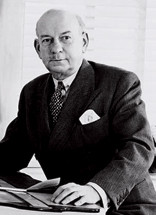
Walter Dorwin Teague was an American industrial designer, architect, illustrator, graphic designer, writer, and entrepreneur. Often referred to as the "Dean of Industrial Design", Teague pioneered in the establishment of industrial design as a profession in the US, along with Norman Bel Geddes, Raymond Loewy, Henry Dreyfuss and Joseph Sinel.
Parsons School of Design, known colloquially as Parsons, is a private art and design college located in the Greenwich Village neighborhood of New York City. Founded in 1896 after a group of progressive artists broke away from established Manhattan art academies in protest of limited creative autonomy, Parsons is one of the oldest schools of art and design in New York.
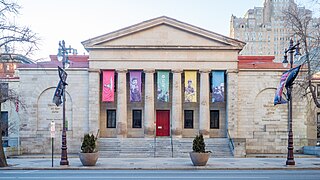
University of the Arts (UArts) was a private arts university in Philadelphia, Pennsylvania. Its campus made up part of the Avenue of the Arts cultural district in Center City, Philadelphia. On May 31, 2024, university administrators suddenly announced that the university would close on June 7, 2024, although its precarious financial situation had been known for some time. It was accredited by the Middle States Commission on Higher Education.

James Wines is an American artist and architect associated with environmental design. Wines is founder and president of SITE, a New York City-based architecture and environmental arts organization chartered in 1970. This multi-disciplinary practice focuses on the design of buildings, public spaces, environmental art works, landscape designs, master plans, interiors and product design. The main focus of his design work is on green issues and the integration of buildings with their surrounding contexts.

Craig Ellwood was an American architect whose career spanned the early 1950s through the mid-1970s in Los Angeles. Although untrained as an architect, he fashioned an influential persona and career through a talent for good design, self-promotion, and ambition. He was recognized professionally for fusing of the formalism of Mies van der Rohe with the informal style of California modernists.
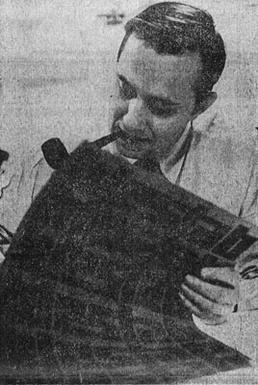
Noel Martin was an American graphic designer.

Eliot Fette Noyes was an American architect and industrial designer, who worked on projects for IBM, most notably the IBM Selectric typewriter and the IBM Aerospace Research Center in Los Angeles, California. Noyes was also a pioneer in development of comprehensive corporate-wide design programs that integrated design strategy and business strategy. Noyes worked on corporate imagery for IBM, Mobil Oil, Cummins Engine and Westinghouse.

Julian Francis Abele was a prominent black American architect, and chief designer in the offices of Horace Trumbauer. He contributed to the design of more than 400 buildings, including the Widener Memorial Library at Harvard University (1912–15), Philadelphia's Central Library (1917–27), and the Philadelphia Museum of Art (1914–28). He was the primary designer of the west campus of Duke University (1924–54).
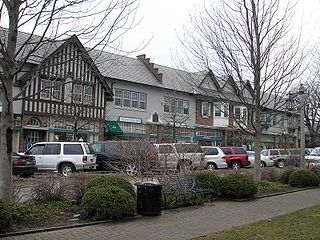
Howard Van Doren Shaw AIA was an architect in Chicago, Illinois. Shaw was a leader in the American Craftsman movement, best exemplified in his 1900 remodel of Second Presbyterian Church in Chicago. He designed Marktown, Clayton Mark's planned worker community in Northwest Indiana.
Ron Pompei is an American designer born in Washington, D.C.. Trained as an artist, sculptor and designer, he received a Bachelor of Architecture from the Cooper Union in New York, a B.A. in Fine Arts from the Philadelphia College of Art, and studied Industrial Design at Pratt Institute.

Tom Hardy is an American design strategist, former head of the Corporate IBM Design Program and Professor of Design Management at Savannah College of Art and Design (SCAD). As corporate design advisor to Samsung Electronics (1996-2003) Hardy was instrumental in transforming their brand image from follower to innovation leader by creating a new brand-design ethos: "Balance of Reason & Feeling", and building significant global brand equity through judicious use of design strategy and management. While at IBM (1970-1992), he was an award-winning industrial designer and later served as corporate head of the IBM Design Program responsible for worldwide brand-design identity. His leadership contributed to the revitalization of IBM's brand image via differentiated design such as the iconic ThinkPad.
Frederick Henri Kay Henrion, RDI, OBE, was a Nuremberg-born German graphic designer.

Bob Salpeter was an American graphic designer.

Malcolm Grear was an American graphic designer whose work encompassed visual identity programs, print publications, environmental design, packaging, and website design. He is best known for his visual identity work and designed logos for the Department of Health and Human Services, the Veterans Administration, the Presbyterian Church USA, and Vanderbilt University. He was the CEO of Malcolm Grear Designers, a design studio in Providence, Rhode Island.
Patricia Moore is an American industrial designer, gerontologist, and author. She is one of the founders of the universal design philosophy.
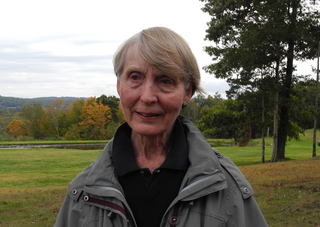
Inge Druckrey is a German-born American designer and educator, who brought the Swiss school of design to the United States. She taught at Yale University, Rhode Island School of Design, University of Hartford, Philadelphia College of Art, Kunstgewerbeschule in Krefeld, The University of the Arts, Kansas City Art Institute. She is Professor Emerita of Graphic Design, University of the Arts.

Pierre Armand Kleykamp was a Modern furniture, interior, graphic, textile, product designer and teacher. Born in Belgium of Dutch nationality, he became a U.S. citizen in 1954. His clients included KLM, Holland-American Lines, Aetna Life Insurance, the United Nations. He supplied furniture to the Goed Wonen Groep and crafted several pieces for the interior of Schiphol Airport's International Departure Hall.

Cheryl D. Holmes Miller is an American graphic designer, Christian minister, writer, artist, theologian, and decolonizing historian. She is known for her contributions to racial and gender equality in the graphic design field, and establishing one of the first black-women-owned design firms in New York City in 1984.
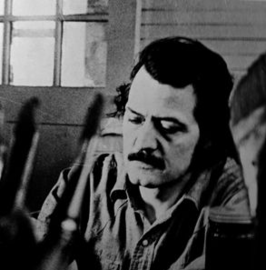
Fred Troller was a Swiss American artist and designer known for his bold graphic style. He was a prominent figure in the world of graphic design, particularly renowned for his contributions to the field of advertising.
References
- ↑ "Home for Destitute Colored Children (Philadelphia, Pa.) | Archives & Manuscripts". archives.tricolib.brynmawr.edu. Retrieved 2024-05-04.
- ↑ "Video Oral History with Noel Mayo" (PDF). The HistoryMakers. September 5, 2002.
- ↑ "Dr. Noel Mayo, IDSA". Industrial Designers Society of America. Retrieved 4 May 2024.
- 1 2 3 "Alum Creates Scholarship for Students of Color | University of the Arts". www.uarts.edu. Retrieved 2024-05-04.
- ↑ "Noel Mayo, President Noel Mayo Associates" (PDF). DMI Volume 28. Issue 2.
- ↑ "About Page". noelmayo.com.
- ↑ "Honoring Dr. Noel Mayo's Retirement". design.osu.edu. September 9, 2016.